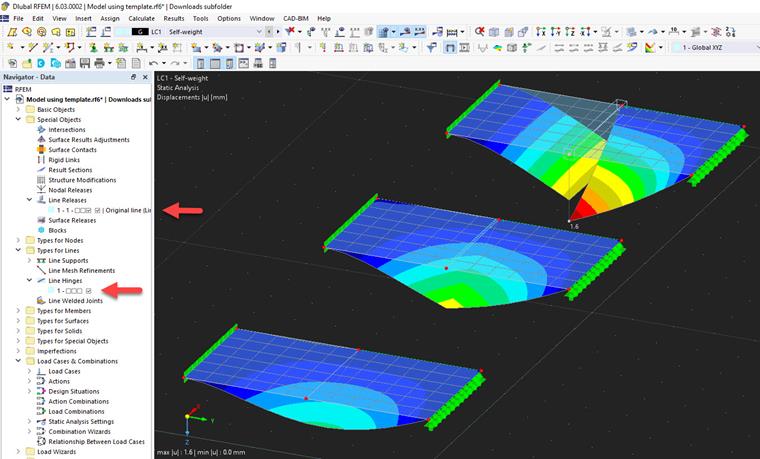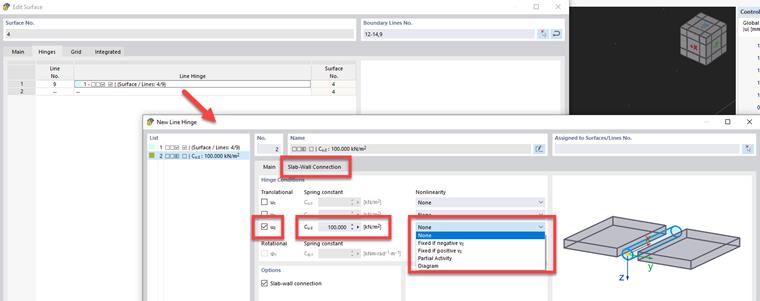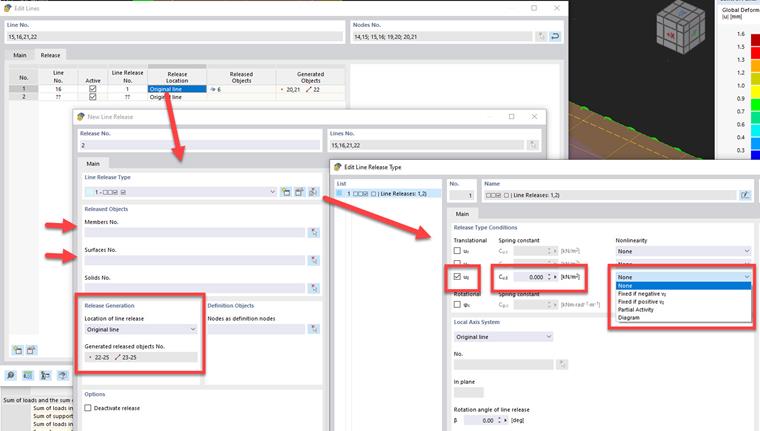Generally, the elements in RFEM 6 are rigidly connected by default. But by using special RFEM objects, we may change the way the model responds to the actions. For this purpose, we may use line hinges and line releases. The difference between them is explained below.
Line Hinge
Line hinges change the characteristics of connections between surfaces.
By using line hinges, we can allow for rotation between two surfaces on a selected edge or we may define a full translational release between elements.
Aside from these options, we can also define a spring stiffness in every direction or allow for nonlinearities in this hinge, a new feature compared to the previous RFEM program.
Moreover, line hinges allow for special options such as a slab-wall connection which is described here:
Line Release
Line releases work similarly to line hinges, by changing the behavior of two connected elements, but unlike a hinge it also creates a new line and nodes in its place.
By using line releases, we can define/select more objects to be released rather than only connected surfaces. Line releases may be used to also include members and solids in their definition.
Similarly to line hinges, we can allow for rotation and translational releases between elements with options for a spring stiffness and nonlinearities.
The line release is a very powerful tool in managing more complicated geometries and connections between specific elements.


